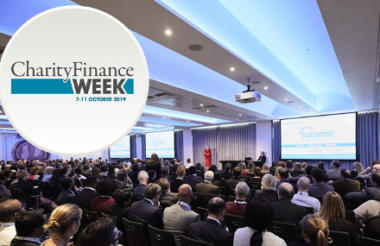Key to any charity’s long-term success is financial sustainability. Those working within charity finance have the opportunity to change mindsets and behaviours throughout their organisations to ensure this is achieved, senior charity figures were told yesterday.
As part of Civil Society Media's Charity Finance Week, delegates at a half-day seminar, Developing a strategy for financial sustainability, heard from a range of experts as to the issues surrounding this.
Financial literacy
Simon Hopkins, director of resources at Blind Veterans UK, said that financial literacy is a crucial element of building a sustainable financial strategy.
Charity trustees may have financial literacy from their non-charity work, perhaps from the commercial or public sectors. However, Hopkins said financial strategy for a charity is different to that of other sectors.
For example, he said, a trustee from the public sector is likely to a view financial strategy largely based on spending.
Likewise, one from the commercial sector will be focused on earnings per share as well as profit and loss statements. He said that for these commercial individuals running a “deficit is an anathema”.
But, Hopkins said it was a myth that financial sustainability in a charity is the same as running a balanced budget. “Being in deficit does not equate to being unsustainable,” he said. There can be very good reasons why a charity decides to run a deficit for a period of time. This is often to invest in new programmes to aid beneficiaries.
However, Hopkins also warned that, if not managed correctly, over time these programmes can turn into services. This is where unsustainability can “subtly” creep in. If this is the case then it is the role of finance to point this out, and the potential outcomes, to the rest of management.
In addition, finance teams are not always included in the early discussions about the strategy a charity will adopt. These discussions can already decide whether the charity is financial sustainable over the long term, Hopkins said.
In order to ensure charity-specific financial literacy throughout the organisation, Hopkins said those in finance need to become “coaches, guides and mentors, even to those people that we work for”. He added they don’t need to be financial experts but at least able to spot issues that could lead to sustainability issues.
Financial planning
Sharon Martin, head of finance at Cats Protection, spoke of her experience of the evolution of the charity’s financial planning. In 2012 it “embarked on an ambitious fundraising strategy” designed to increase its income and diversify its income base. In 2018 income was up 84 per cent compared with 2012. The free reserves went up over the same period from £30m to £50m.
In order to ensure the finances were sustainable, every year a medium term financial projection is prepared. This, Martin said, is based on income forecasts from the fundraising team, data from analysts Legacy Foresight, known expenditure plus an inflationary element and known new activities.
Although only a general “framework for the future” it works for the charity and shows “the capacity for growth or if there are strong financial headwinds,” she said.
A three-year budgeting plan has also been implemented. This, Martin said, is designed to help overcome issues from items being put on the next year’s budget in order to “get them on the table” even if it was not going to be possible to actually carry them out in the next year.
Investments
Delegates also heard how careful management of a charity’s investment portfolio can help with sustainability.
Pradeep Kachhala, regional director, institutional group at SEI and Alistair Jones, UK advice director, institutional advisory at SEI, said that charities should look at whether they can save money on their investment fees. This, Kachhala said, should go “beyond simply negotiating with their investment manager.”
He said SEI research suggests that charities pay more in total fees than other investors, such as pension schemes. The difference was around 0.5 per cent a year. If it were able to reduce costs to the same level, the charity sector could, he said, make a saving of up to £288m a year. This, he argued, could be done by outsourcing to an investment manager that is able to negotiate on price on behalf a large group of charities at the same time.
Jones said that charities can also make more of their endowments in order to allow them to spend more. SEI data suggests that between 2012 and 2016, spending had not grown at the same rate as investment growth, he said. If it had done so then the sector would have been able to spend an extra £1.6bn. He added that by carefully tracking how much an investment portfolio is worth then it can allow the charity to spend more, or if values fall that spending can be reduced to make the assets more sustainable.
Martin said as part of its recent evolution Cats Protection had reviewed its investment strategy. One of the early elements of this was getting trustees to agree investment beliefs.
It also ensured that the funds held supported the capital plans. This led to the realisation that the charity could afford to take a more cautious investment approach, Martin said.
She added that one challenge was ensuring all the trustees and management had the knowledge and understanding to support the move rather than relying one individual with investment knowledge.
“Finance is not the be all and end all, it is a metric,” Martin added. “What should be the focus is your plans and what you want to achieve and then translating those into the finances.”
Overall, Hopkins also said there is “a strong case for saying there is no difference between strategy in general and finance strategy in particular. They are completely intertwined and connected.”
|
Related articles












